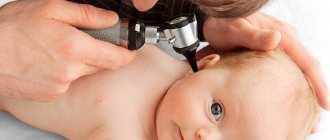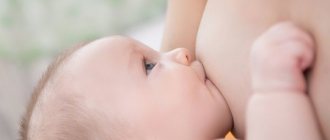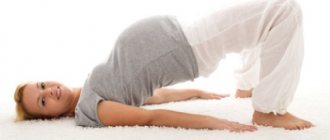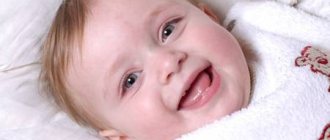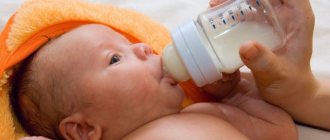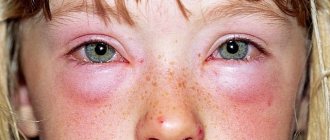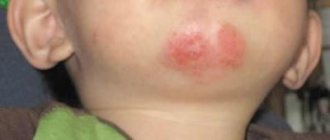If a child has a cold head, you also need to palpate his nose and limbs to determine whether the thermoregulation process is impaired or not.
When bringing their baby to the pediatrician for examination, parents often ask the most unexpected questions about the health of their children. Sometimes such questions seem simply ridiculous and ridiculous to a qualified specialist, but, nevertheless, the health of the baby always comes first. Therefore, it is always better to be on the safe side. Many mothers are especially concerned that when they probe, they find cold heads in their children. Is this normal, or is there still cause for concern?
Cold nose in a baby: at home, in the maternity hospital, on the street, while walking in winter
Often mothers worry that their newborn has a cold nose.
When this happens, they wrap him up even more. In order to prevent such an unpleasant symptom, in their opinion, in the future, they try to dress the baby as warmly as possible, which can harm the baby. Baby's cool nose
They are partly right - the child’s temperature regulation system is far from perfect, so it is more difficult for him to adapt to the cold. On the other hand, it should not be excessively protected from exposure to low temperatures. In the future, this can lead to the fact that even the weakest breeze will lead to a cold.
How to determine nose temperature
To determine how cold a newborn's nose is, just put your finger on it. Moreover, this does not always mean that he is really cold. This happens even in late spring or summer.
Experts advise identifying hypothermia not by the nose, but by the neck, back of the head and upper back. If these areas are warm and your nose is cool, this is normal and you can continue your walk.
Newborn baby
If a child's exposed body parts are hot after the nose was recently cold, parents may worry. The reason here lies in the fact that the baby is simply hot. The family wrapped up the baby excessively, as if it was not -1, but -20 outside. In turn, this is even more dangerous than hypothermia, since a sweaty baby can easily catch a variety of diseases.
If the cause of a cold nose in a newborn, even at home, is hypothermia, then you can notice the following signs:
- The temperature under clothes is low. It should be warm under your jacket and hat. If it even feels like 16-18 degrees there, you need to go home to warm up.
- Paleness of cheeks and lips. If they were red a couple of minutes ago and suddenly turn white, this is a sad signal.
- Problems with sleep or, conversely, an excessive desire to sleep.
- Lack of desire to play.
- Blue tint of fingers.
Important! If at least some of these signs appear, the reason why the newborn has a cold nose is obvious.
Why does my nose get cold?
Cold sweat in a child - causes
In most cases, a cool nose in a child means that his thermoregulation is fully functioning.
This may also indicate that the baby has problems with blood circulation, which are also often part of the norm.
Here the reason lies in the fact that not all organs have completely completed their formation. The problem should disappear with age.
There are many reasons why a child is cold:
- Clothes that are too cold or warm.
- Tight clothes and shoes.
- Violation of thermoregulation processes. This is normal in infancy. The main thing is that in the future the baby will be able to independently maintain the correct body temperature.
- Diseases of the endocrine system. This is unlikely at this age. But with reduced thyroid function, body temperature decreases. At the same time, other manifestations are observed, for example, the child gains weight too quickly.
In the maternity hospital
The set of reasons why a baby may have a cool nose in the maternity hospital is very diverse, ranging from insufficient heating to more serious problems. The baby's thermoregulation system is not sufficiently developed, so 18-20 degrees, which is relatively comfortable for an adult, may turn out to be cold for the baby. Therefore, the parent does not feel the cold, but the child freezes.
Newborn baby in the cold
Important! If your baby has a cold nose in the birthing center, you can always see a doctor who will explain whether you should be worried.
During sleep
If your child's nose gets cold while sleeping, there is no need to always worry here either. During this period, metabolism decreases, body temperature can drop by as much as a degree. If your arms and legs are also cold, this may indicate problems with peripheral circulation.
Newborn baby in warmth
To check whether the feelings are justified, it is necessary to observe the warmth of the child’s skin during the day in various situations: while walking, while playing, eating, and so on. You need to regularly visit your doctor, who will most likely tell you that there is no reason to worry.
During the walk
If your child's nose becomes icy while walking in autumn, spring and winter, in most situations there is no need to worry. Due to its anatomical features, it freezes more than other parts of the body. The reason is constantly circulating cold air. It is also a protruding part of the body, which has greater thermal conductivity.
Other possible options
There is a wide range of reasons why a child has problems with a cold nose. This most often happens in the following cases:
- Prematurity. Even a full-term baby's thermoregulation system is rather weak.
- Malfunctions of the endocrine system.
- Problems with the cardiovascular system.
- The onset of respiratory infections.
- Individual characteristics of the body.
- It's cold in the apartment. This is one of the most common reasons why a baby has cold cheeks at home.
- Stress. In this condition, blood flows from the face to the brain.
When to be wary
If a newborn baby is constantly freezing, and nothing helps him, his temperature rises, he looks downright painful, you should consult a doctor. If at the same time his mood is normal, he eats well, and the baby’s body itself is warm, then you should not worry.
Blue nasolabial triangle in a newborn - causes of blueness
It is necessary to consult a doctor if the nose is icy, regardless of the weather, and also if the baby’s arms and legs are cold. Only then can we talk about serious disruptions in the functioning of the body.
Important! If the baby feels normal and plays, then there is no need to worry. Typically, your baby's well-being comes first in determining whether there is reason to be concerned about any symptom.
Prevention of ice spout
Why does a newborn shudder in his sleep - reasons
What to do to prevent your baby's nose from getting cold? First of all, the baby needs to be kept warm. However, you should not dress him too warmly. In the long term, this will lead to the baby not being hardened. As a result, even a slight coolness will be enough to make the child's nose become icy.
You should try to keep the temperature in the apartment in the cold season within about 20 degrees. Higher temperatures are not recommended, because too large temperature changes, when it is +27 in the room and -10 outside, are harmful. If a child spends a long time in a room whose temperature is below 20 degrees, he may freeze. This is why a baby may have cold cheeks at home.
Source: https://kpoxa.info/zdorovie-pitanie/u-novorozhdennogo-xolodnyj-nos.html
Treatment of severe frostbite in a hospital
The first thing the doctor will do is assess the degree of frostbite, and then the child will be prescribed comprehensive drug treatment. Initially, the little patient will be prescribed the drugs “Analgin”, “No-spa” or “Aspirin”, which relieve pain and thin the blood. For superficial treatment of affected skin, doctors recommend using Bepanten, Vinital, Traumeel or Levomekol ointments. If deep frostbite of the cheek is diagnosed in a child, treatment may include a course of antibiotic therapy, which will prevent inflammation of the soft tissues. Such medications will be selected by the attending physician, taking into account the individual characteristics of the patient and the complexity of the disease, just like a multivitamin complex.
A newborn has a cold nose at home, in the maternity hospital, on a walk - the causes of the phenomenon
With the arrival of a baby in the family, attentive parents pay attention to all the symptoms. Sometimes a baby develops completely natural factors that do not require drug treatment.
Such signs include physiological rhinitis, snot when cutting the first teeth, and so on. But if a baby has a cold nose, mom and dad should determine the root cause of this reaction and under no circumstances ignore it.
Often a cool nose appears as the first symptom of hypothermia or the onset of an acute respiratory disease.
If the cause of a cold nose in a newborn at home does not lie in the low temperature at home, then you should undergo a diagnosis and take medication.
Often, it is precisely this symptom that becomes a signaling factor for a viral, cold or infectious disease.
How to determine nose temperature
To determine how cold a newborn's nose is, just put your finger on it. Moreover, this does not always mean that he is really cold. This happens even in late spring or summer.
Experts advise identifying hypothermia not by the nose, but by the neck, back of the head and upper back. If these areas are warm and your nose is cool, this is normal and you can continue your walk.
Newborn baby
If a child's exposed body parts are hot after the nose was recently cold, parents may worry. The reason here lies in the fact that the baby is simply hot. The family wrapped up the baby excessively, as if it was not -1, but -20 outside. In turn, this is even more dangerous than hypothermia, since a sweaty baby can easily catch a variety of diseases.
If the cause of a cold nose in a newborn, even at home, is hypothermia, then you can notice the following signs:
- The temperature under clothes is low. It should be warm under your jacket and hat. If it even feels like 16-18 degrees there, you need to go home to warm up.
- Paleness of cheeks and lips. If they were red a couple of minutes ago and suddenly turn white, this is a sad signal.
- Problems with sleep or, conversely, an excessive desire to sleep.
- Lack of desire to play.
- Blue tint of fingers.
Important! If at least some of these signs appear, the reason why the newborn has a cold nose is obvious.
Why does my nose get cold?
Why a child does not crawl at 9 months - reasons
In most cases, a cool nose in a child means that his thermoregulation is fully functioning. This may also indicate that the baby has problems with blood circulation, which are also often part of the norm. Here the reason lies in the fact that not all organs have completely completed their formation. The problem should disappear with age.
There are many reasons why a child is cold:
- Clothes that are too cold or warm.
- Tight clothes and shoes.
- Violation of thermoregulation processes. This is normal in infancy. The main thing is that in the future the baby will be able to independently maintain the correct body temperature.
- Diseases of the endocrine system. This is unlikely at this age. But with reduced thyroid function, body temperature decreases. At the same time, other manifestations are observed, for example, the child gains weight too quickly.
In the maternity hospital
The set of reasons why a baby may have a cool nose in the maternity hospital is very diverse, ranging from insufficient heating to more serious problems. The baby's thermoregulation system is not sufficiently developed, so 18-20 degrees, which is relatively comfortable for an adult, may turn out to be cold for the baby. Therefore, the parent does not feel the cold, but the child freezes.
Newborn baby in the cold
Important! If your baby has a cold nose in the birthing center, you can always see a doctor who will explain whether you should be worried.
During sleep
If your child's nose gets cold while sleeping, there is no need to always worry here either. During this period, metabolism decreases, body temperature can drop by as much as a degree. If your arms and legs are also cold, this may indicate problems with peripheral circulation.
Newborn baby in warmth
To check whether the feelings are justified, it is necessary to observe the warmth of the child’s skin during the day in various situations: while walking, while playing, eating, and so on. You need to regularly visit your doctor, who will most likely tell you that there is no reason to worry.
During the walk
If your child's nose becomes icy while walking in autumn, spring and winter, in most situations there is no need to worry. Due to its anatomical features, it freezes more than other parts of the body. The reason is constantly circulating cold air. It is also a protruding part of the body, which has greater thermal conductivity.
Other possible options
There is a wide range of reasons why a child has problems with a cold nose. This most often happens in the following cases:
- Prematurity. Even a full-term baby's thermoregulation system is rather weak.
- Malfunctions of the endocrine system.
- Problems with the cardiovascular system.
- The onset of respiratory infections.
- Individual characteristics of the body.
- It's cold in the apartment. This is one of the most common reasons why a baby has cold cheeks at home.
- Stress. In this condition, blood flows from the face to the brain.
Additional recommendations for improving blood circulation
Of course, if you suspect poor blood circulation, you should first consult with a pediatrician or neonatologist in the maternity hospital. However, there are simple and affordable ways to quickly improve it without harming the baby:
Source: https://kcdc.ru/simptomatika/u-mladenca-holodnyj-nosik.html
Which babies are at risk?
Some mothers believe that only inattentive and careless parents can get severe frostbite on their child’s cheeks. However, these are groundless speculations. Babies with atopic dermatitis, exudative diathesis, and paratrophy can get severe frostbite on exposed skin. The manifestations of these diseases are very similar to the symptoms of frostbite, so even the most caring and attentive mothers can easily make a mistake with the diagnosis. In addition, the skin of babies after viral infections, stress and overwork is very susceptible to low temperatures, so these children most often suffer from severe frostbite. And it is better to be treated in such situations under the supervision of doctors. This can be either inpatient treatment or home treatment with regular visits to a medical facility.
Why might a baby have cold hands, feet, body or forehead?
Young parents, as a rule, show excessive care for the baby from the first days of their newborn child’s life. This is why pediatricians and neonatologists very often have to answer the question of why a baby’s hands are cold.
Is it dangerous
Cold extremities in a newborn baby are not a symptom of any disease, provided that this is the only sign that worries the parents. Very often, parents, as well as doctors, cannot answer the question of why the baby has a cold nose and hands, simply because for many children at this age this is a normal phenomenon.
What does it mean
Many grandmothers and more experienced mothers, in a situation where the baby has cool legs and arms, advise warming the child up by wrapping him in a blanket. You should not do this until you figure out why your child has cold extremities.
As a rule, the reason that children under one and a half years old have cold feet or hands is that their thermoregulation system is not yet perfect. In other words, the baby’s body, to a certain extent, reacts inadequately to the ambient temperature. This is not a pathology, as the child’s body grows up, it will quickly adapt to the temperature regime of the surrounding world.
When to worry
We have already said that the only sign - cold hands and feet - is not a cause for concern. This is true. However, parents should monitor the general well-being of the baby.
https://www.youtube.com/watch?v=mDcKZ380Hhc
If the baby has a hot forehead and body, but at the same time wet extremities, then it is likely that you have simply overheated the baby. In this case, he should be undressed a little.
If the room where the newborn baby is located is no more than 20 degrees C, and the baby himself is not wrapped in a warm blanket, and the symptoms persist, it is necessary to call a doctor at home who can correctly assess the baby’s condition.
If, in addition to the fact that an infant has cold hands and feet, other symptoms are noted, parents should immediately seek medical help.
Alarming symptoms
- Loss of appetite.
- High body temperature measured with a thermometer (not lips!).
- Tearfulness, capriciousness, the child cries for a long time and cannot calm down.
- Any kind of dermatitis.
The combination of all these symptoms in the overall picture really indicates that the child needs to be shown to the attending doctor.
It might be cold
It is quite easy to overcool a baby due to the fact that its thermoregulation system is not yet perfect. In this case, not only the baby’s legs and arms will be cold, the forehead and body will also be cool. In this case, the child should be warmed up.
How to keep your baby warm
When taking measures to keep your baby warm, it is very important not to overdo it and avoid overheating. Therefore, you need to do this wisely. If you come from a cold street into a warm room and find that the baby’s limbs are very cold, and besides, he has a cool body, then the safest method to warm up the baby is the following method.
- If the baby is breastfed, he needs to be undressed. The mother should also expose her belly along with her breasts and attach the baby to her breast. This method is called "skin to skin". The baby will quickly warm up from the mother’s body temperature, become satiated, and then fall asleep. If the room is cool, mother and baby can cover themselves with a blanket. I think it would be unnecessary to remind that mom could also use a hot drink.
- Formula-fed babies can also be warmed up by leaning him against the body of one of the parents; cold legs and arms are perfectly warmed by dad’s belly.
- If your baby has cold feet and hands, and it seems to you that he is frozen in a room where, in principle, it is not cold, do not rush to wrap him up. First, put another layer of clothing on your child and watch the baby.
Overheating is a rather dangerous condition for a baby, in response to which prickly heat may appear and the butt may turn red. The general condition will worsen, the child will become capricious and lethargic.
What not to do
- Rub your baby's cold extremities with a hard towel, especially if you came from the cold. Better put his legs and arms to your body.
- Strive to put on the child all the things he has.
- Give in to the panic that is often sowed by grandmothers who claim that their beloved grandson is frozen to death.
First of all, try to understand for yourself why the child has cold hands, feet, and forehead. It is likely that this is a normal state for him.
Source: https://grudnichky.ru/zdorove/holodnyie-ruchki-u-grudnichka.html
Prevention of frostbite
Everyone knows that every disease is easier to prevent than to treat later. Therefore, when going for a walk on a frosty winter day, do not neglect the recommendations of pediatricians. Lubricate the child’s cheeks with protective cream, wear clothes made from natural fabrics, be sure to protect the neck with a scarf, but do not overdo it, they should not cover the face. Otherwise, in low temperatures and windy weather, frostbite on a child’s cheeks can become a real problem. The walking time should be clearly adjusted, and as soon as a feeling of cold begins to appear, you should immediately go home.
What to do if your child suddenly has a frostbitten cheek?
Many parents are afraid to go for a walk with their child when the temperature outside is 20 °C or lower, for fear of frostbite. However, this is not a reason to leave your child at home. A child's exposed body parts are susceptible to frostbite even in extreme cold.
Of course, infants should not be taken outside during very cold times, since they will not tell you about their feelings, and it is much more difficult to treat an infant than an already matured child.
Frostbite on the cheeks is sometimes overlooked when other parts of the body are looked after, but this is very important!
If a child spends a long time outside, especially in strong cold winds or high humidity, then the risk of frostbite is very high. There is also a danger of frostbite if the child is still weak after an illness, and also if the baby is hungry.
Try to feed your baby before going for a walk. For the most part, infants are exposed to frostbite, because they spend the entire walk almost motionless in the stroller, and it is not possible to cover their cheeks.
Let's look at the signs and measures that need to be taken if your baby does have frostbitten cheeks.
The first sign of frostbite is redness of the skin, which is very easy to notice. It is accompanied by a burning sensation. The skin becomes less sensitive. The skin tone may even become white or bluish.
Children do not always pay attention to this, since redness of the skin is a natural reaction to frost and cold, and small children will not talk about all their sensations.
Therefore, parents should carefully monitor changes in the color of their child's skin.
It is important to distinguish slightly reddened cheeks in the cold from real frostbite. The first is the skin's natural reaction to cold as blood circulation increases. But if pallor is observed after redness, this is a sign to take the necessary measures.
The spots themselves may be warm or even hot, and there may be slight swelling. All this can be seen in photos on the Internet.
A rapid heartbeat may occur, trembling may occur, the child may have difficulty pronouncing words, body temperature drops to 35 degrees, drowsiness and confusion may occur.
Babies cry, their appetite noticeably decreases, and they do not allow touching sore spots and sleep poorly. Frostbite indicates that blood circulation is impaired and cell death is occurring.
There are several stages of frostbite.
At the first stage, frostbite is not severe, the skin is reddened, and tingling may be felt. At this stage, cell death does not occur; after a week, the frostbitten area will probably begin to peel off. There is no need to treat frostbitten cheeks with various alcohol-based tinctures, and no actions to warm the skin should be carried out.
In the second stage, the pain may intensify, and the skin will become bluish, and small blisters filled with liquid may appear. After the end of treatment, which, with the correct selection of actions and means, will last up to 2 weeks, small scars may remain on the baby’s cheeks. Recovery takes longer.
The third and fourth stages are very different from the first two and are more severe.
On the third, the bubbles can fill with bloody fluid, puncturing which will lead to serious consequences, so don’t try to do this! After the soft tissues of the cheeks are rejected, scars appear.
At stage 3, you need to consult a doctor, because treatment on your own can lead to unpleasant results.
At the fourth stage of frostbite, complete loss of sensation occurs in both the cheeks and the entire face. Frostbite may also occur in other parts of the body, such as limbs.
Frostbitten skin acquires a marbled tint, and necrosis begins to spread. Remember, the more severe the frostbite, the longer it will take to treat, and the longer the skin will take to recover.
Therefore, try to provide first aid as quickly as possible!
Causes of frostbite
Many parents make a huge mistake, thinking that frostbite in their children can only be caused by low air temperatures, namely -10°C or lower. In fact, high air humidity and cold north winds have a detrimental effect on exposed areas of a child’s skin. In such weather, even on those sunny winter days when the thermometer does not drop below -5 °C, you should not walk with your children for long or should refrain from walking altogether. This is especially true for infants who have not yet learned to independently regulate heat exchange.
You should not interpret such recommendations from pediatricians in your own way and protect the little person from the street as much as possible in cold weather, this can cause much more harm than short games in the cold. For example, Komarovsky, a well-known pediatrician, calls mild frostbite on a child’s cheeks a common occurrence in the winter season. Sometimes it can be mistaken for a regular blush and simply moisturize the baby’s cheeks with a nourishing cream. Therefore, in order to preserve the health of their heir, it is better for parents to stick to the golden mean and, depending on weather conditions, adjust the walking time, but not abandon it.
Hydrocephalus
This is another disease that can be suspected if such a symptom is present. If a child has a hot head but a normal body, this may indicate the development of neurological diseases. Usually, a neurologist notices signs of hydrocephalus at the first examination and prescribes further examination and correction.
By what signs can one suspect hydrocephalus or hydrocephalus? The following symptoms should alert you:
- hot head and excessive sweating;
- increase in size of venous vessels;
- tilting the head back;
- frequent and profuse regurgitation and vomiting;
- Frequent, causeless crying and grabbing your head with your hands;
- shape, excessive pulsation or retraction of the fontanel;
- violation of muscle tone.
Hydrocephalus is a very serious disease that requires immediate correction. If you have even the slightest suspicion or observe similar symptoms, you should immediately notify your local pediatrician. Timely therapy can completely cure hydrocephalus and the baby will grow up healthy. Otherwise, the disease can lead to the development of abnormalities in the baby’s mental state.
Features of sweating in children
First, take a closer look at your child - are you monitoring his temperature correctly? Sweating is normal; this is how the body gets rid of toxins, unnecessary substances, or simply excess fluid. Sweat glands are the same part of the excretory system and play a very important role. For normal growth and healthy development, the process of sweating is necessary and very important.
You've probably heard that you can't wrap up a child. Even if it seems to you that it is very cold outside, and the wind only adds danger to your baby’s health, think twice before dressing him inappropriately for the weather. An excess of warm clothing on a child is much more dangerous than a lack of it, because many layers of dense fabric simply do not allow heat exchange (in which sweating takes an active part) to occur correctly.
Strange symptoms
By the way, a reaction to cold weather is the most obvious symptom of a cold allergy. But, if you carefully observe the child, you can detect other symptoms of this strange disease. For example, a sudden runny nose if the child drank iced tea or left a hot room into a cool one. Or skin irritation after washing your hands with cold water, or symptoms of conjunctivitis after washing with cold water.
Before you lament that your child gets sick from just one sip of cold water, do a test. You can do it yourself.
Allergists recommend placing a piece of ice on the inner bend of the elbow for a couple of minutes. During a normal reaction, the skin will, of course, turn slightly red, but that’s all. But the skin in this place may not only turn red, but also turn pale or begin to itch, burn, a blister may appear, and, most importantly, all these symptoms persist for a very long time or even appear after the ice has been removed.
